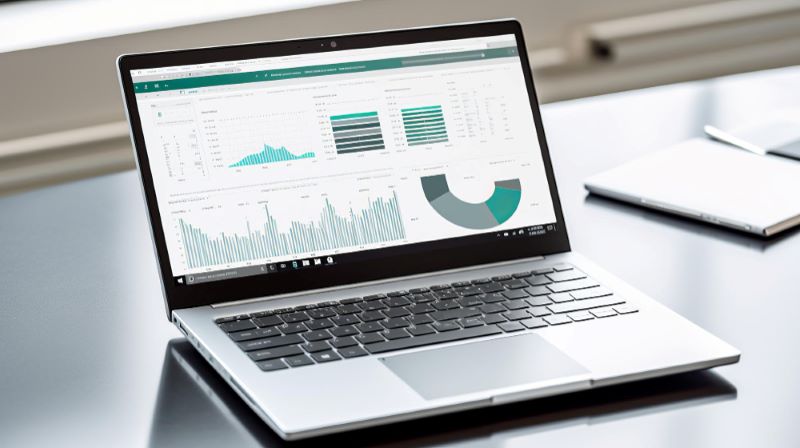6 Benefits of SEO Data Analysis for Your Small Business

SEO is a really hot buzzword in the digital world nowadays. It used to be just something the website experts did. Now though, every Tom, Dick, and Harry with the tiniest bit of digital real-estate is looking to put their business in front of everyone’s noses, and guess what they turn to? That’s right, SEO. If you’ve got so much as a Google Business page, then you need to optimize it so that search engines can show you to people when they search for your type of business.
But with the newfound attention being paid to SEO comes a newfound difficulty. It has become quite a task to get your digital property to rank high on search engines. To optimize a piece of content back in the days, all you had to do was load it up with keywords, add a generous helping of links, spice it up with images and serve it up on the internet. Voila! One first-page ranking is coming right up. Nowadays, you need something more. You need more information and better strategies. And the very best strategy you could adopt is a data-driven strategy. A data-driven system allows you to collect SEO data from other people, conduct an SEO data analysis and use the results to develop a strategy of your own that has already taken into account other people’s strategies.
In this article, we’ll discuss what SEO data analysis entails precisely, some of its benefits, and we’ll also take a look at the best method for collecting SEO data. Feel free to skip to the section that most interests you with the table of contents below.
Table of Contents
2. SEO and Analytics: The Need for Analytics in SEO
3. How To Implement Data Science in SEO With Web Scraping
4. Six Benefits of SEO Data Analysis for Your Business
5. Scraping Your Way Through SEO Analysis With Scraping Robot
What Is SEO Data?

Before we take a look at what constitutes SEO data, let’s define SEO. SEO is the process of auditing and editing your website structure and contents to improve your visibility and ranking on search engines. Now, if you already ventured into SEO, then you will know of processes like “keyword research,” “link-building,” “impressions,” etc. If you plan to venture into SEO for your business, you will come to know these processes. And if you are not planning to venture into SEO, then you better start planning. One thing all these processes we mentioned have in common is data. Either they require data to be carried out successfully, or they generate data in the process of carrying them out. That brings us back to our initial question. What constitutes SEO data? SEO data are the datasets that are either required to successfully initiate SEO processes, such as competitor keyword usage data, or generated as a result of carrying out SEO processes such as bounce rates or Click-through-rates (CTR). Here are some more examples of SEO data:
- Keyword search volume: This refers to the number of times people search for a particular keyword in a specific timeframe.
- Organic traffic: This is the number of people that visit your website from search engine results.
- Backlink data: This is the number of links to your website from other websites.
- Organic impressions: This refers to the number of times people come across your website on a search engine without paid ads.
These are some of the most common SEO data types that you need to develop a successful data-driven SEO strategy. Now let’s take a look at the exact role data analysis plays in SEO.
SEO and Analytics: The Need for Analytics in SEO

One of the most endearing aspects of SEO is that it is all completely online. There is no offline SEO. If it is SEO, then it is happening online. And if it happened online, then it will leave a data footprint, which you can access (with the right tools) and use to inform your strategy. SEO data analysis has become an essential part of modern SEO practices with the level of congestion in SEO activities and the constant upgrading of SEO rules by search engines. Like I said earlier, with SEO, either you need data to carry out processes or the processes you carry out, generate data.
An excellent example is keyword research. To successfully carry out keyword research and identify the best keywords to concentrate your SEO efforts on, you need to obtain datasets like your competitors’ keyword rankings. You need to know the monthly search volume of the keyword you are trying to rank for, the number of websites ranking for that keyword, etc. In picking a keyword, you want to go for a keyword with a high search volume and low competition. Therefore, you need to collect all these datasets and analyze them to determine the optimal keyword to focus your SEO efforts on. SEO and analytics are two disciplines that have become intertwined and must be treated as such. If you want to succeed with SEO, then you need to continually carry out SEO data analysis to determine the best methods and strategies to follow.
How To Implement Data Science in SEO With Web Scraping

Now, if you have started implementing SEO practices to improve visibility for your digital real-estate, then you’ve probably asked yourself once or twice, “is there a reason why I’m getting no data in SEO?” Well, the answer to your question could be that you aren’t following the proper SEO processes. Or it could just be that you don’t have the right data collection tools. Like any other data, SEO data is voluminous and can be quite challenging to sort through and collect without the right tools. But it’s not impossible. With web scraping, you can easily collect all the data you need, both from search engines and other websites, to successfully carry out SEO data analysis.
Web scraping uses bots known as “crawlers” or “spiders” to parse through the source code of a given webpage and extract data according to some preset parameters. The crawler moves through the website and tags the data according to your data parameters, and then the extractor collects the tagged data and extracts them into a spreadsheet.
With web scraping, you can easily collect datasets like keyword search volume and competitor rankings from websites like Moz that focus on aggregating these data types. You can also scrape data from Google, such as the top ranking websites for a particular keyword or your own site’s rankings for your target keywords. Web scraping allows you to collect data in large volumes and in real-time, which is essential for successful SEO data analysis.
Now let’s discuss some of the benefits of SEO data analysis for your business.
Six Benefits of SEO Data Analysis for Your Business

SEO analysis can benefit your business in so many ways, but we’ll look at just six of them here.
- Improve keyword research accuracy: With SEO data analysis, your keyword research becomes more targeted and accurate. The more data you have, the more you can identify the optimal keyword to rank in terms of search volume and competition. By collecting data on the keywords your competitors are ranking for, you can quickly identify the popular keywords in your industry and determine the best variations to focus your SEO efforts on.
- Monitor consumer behavior: This might seem utterly unrelated to SEO, but by collecting data on the types of content your consumers click on most, their CTR on search engines for a particular keyword, and even the keywords they search for, you can optimize your SEO and the non-SEO parts of your business to better serve them. And according to a test carried out by Rand Fishkin, the founder of SparkToro, user-behavior metrics play a significant role in search engine rankings. So, if you want to rank, you need to keep an eye on how your consumers behave on search engines. SEO data gives you a perfect way to do this.
- Identify harmful website contents: SEO data analysis helps you identify the parts of your website that aren’t contributing anything or are hurting your SEO efforts. These include multiple versions of the same page, bad links, pages with response errors, pages that are not indexed by search engines, etc.
- Monitor competitors: One of the most useful aspects of SEO data is that it offers insights into non-SEO related aspects of your business and your competitors’. By carrying out SEO analysis on your competitors’ practices, you can gain an insight into their company practices regarding consumer content. Competitor data analysis is a critical aspect of SEO analysis.
- Improve the overall performance of your website: You can improve the overall performance of your website by identifying bad links, low page speed, bad redirects, 404 errors, and other aspects of technical SEO with SEO analysis.
- Replicate best practices: SEO data analysis also allows you to identify the practices that are having the best effect on your SEO efforts so you can focus more on them.
Scraping Your Way Through SEO Analysis With Scraping Robot
If you are looking to start implementing a data-driven SEO strategy, one of the most important things you need is an effective and efficient data collection solution. And that is what Scraping Robot is. At Scraping Robot, we empower you to take charge of your SEO practices without hiring an expert by allowing you to get the data you need as soon as you need it. To get started, just send a message to our developers telling them what you need, and they will get started building your custom scraping solution.
Our scraping service allows you to collect data from multiple pages simultaneously and in real-time. And if you want to take a gander at scraping data yourself, we have some prebuilt scraping modules you can try out. You get 5000 free scrapes per month when you sign up, and every subsequent scrape costs only $0.0018.
Conclusion

Now that you know the benefits of SEO data analysis and know what data to watch for SEO, all that’s left is how to get that data. And that is our purpose at Scraping Robot. So send us a message today and enjoy the benefits of efficient and effective data scraping service.
The information contained within this article, including information posted by official staff, guest-submitted material, message board postings, or other third-party material is presented solely for the purposes of education and furtherance of the knowledge of the reader. All trademarks used in this publication are hereby acknowledged as the property of their respective owners.
